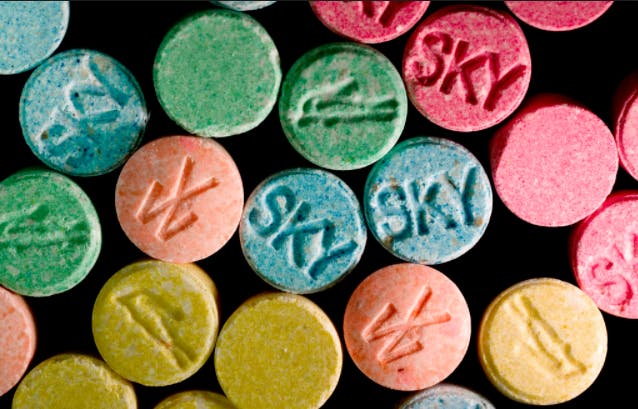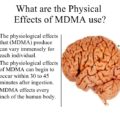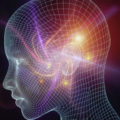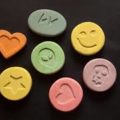A new study in mice hints at a way to harness the pro-social aspects of MDMA without the unwanted side-effects. It’s a tantalizing prospect — if born out, it could pave the way for new treatments for post-traumatic stress disorder and depression.
MDMA’s potential as a therapeutic is wrapped up in its characteristic effects — a feeling of pro-social euphoria, known to make people feel powerfully empathetic, and even cause octopuses to hug each other.
But MDMA is also toxic and potentially addictive — problems for developing any medication.
The social feelings that accompany MDMA have unique neurochemical signatures in the brain that differentiate it from MDMA’s other effects, the study suggests.
The upshot of the data is that MDMA acts as a serotonin transporter in the nucleus accumbens, an area of the brain that’s involved in reward signaling, triggering the pro-social feeling. That means it may be possible to isolate that social feeling from MDMA’s downsides, Robert Malenka, the study’s last author and professor at Stanford University, tells Inverse.
“Our work provides a clear foundation for potentially developing new drugs that have MDMA’s prosocial, and presumably therapeutic effects, with none of its toxic effects,” Malenka says.
MDMA, also known as ecstasy might be better known as music festival party fuel, but it has a legitimate shot at becoming a treatment for people with PTSD.
The study was published this week in Science Translational Medicine.
How MDMA triggers pro-social feelings
This paper focuses on teasing apart how MDMA affects two types of neurotransmitters: serotonin and dopamine. The team tested this over a series of experiments in mice who received either saline injections or MDMA injections. The mice were then placed in three-part chambers, where they could interact with a buddy or isolate themselves.
When the mice received a dose of 7.5mg/kg of MDMA, they became social, but the didn’t show signs of dependency, the researchers say. But increasing the dose even a small amount did produce dependency-like traits. In other drugs, like cocaine, dependency may come down to dopamine’s effects on the brain’s reward circuitry and can transition to dependency.
MDMA has tremendous promise, and may up-end conventional models of psychiatric treatment.”
Boris Heifets, the study’s first author, says dopamine has been implicated in MDMA’s social effects, but the results show it’s not necessary, nor is it directly causing these effects.
Injecting the mice with a drug that blocks dopamine’s effects had no effect on their sociability. Rather, serotonin release in the nucelus accumbens appears to be what drives that behavior. By contrast, the rewarding effects of MDMA did require dopamine signaling.
MDMA is being trialled as a treatment for PSTD.
“Our challenge was untangling which of these [dopamine or serotonin] were responsible for the acute prosocial effect of MDMA,” Heifets says. “We narrowed it down to serotonin release in a particular part of the brain’s reward circuitry.”
The path to MDMA-based therapies
Clinical trials investigating MDMA as a therapy are ongoing. It is hoped that it could treat disorders from PTSD to alcohol abuse. But MDMA’s downsides — toxicity and the potential for dependency — could hold it back from achieving approval in the long-term.
This study suggests a way to circumvent these issues. If you can find a drug that works via the same serotonin-transporting mechanism that MDMA does, it present a safer alternative.
To test this, the researchers gave the mice d-fenfluramine, a drug that also binds to serotonin, but not to dopamine. When mice took that drug, their social preferences were enhanced, and the patterns of activity in their brains were identical to those seen in mice given MDMA.
D-fenfluramine has a checkered history. In the 1970s and ‘80s, it was used as an appetite suppressant (it was an ingredient in Fen-phen, a notorious amphetamine-based diet pill).
But in the 1990s, a handful of studies found that d-fenfluramine had positive effects on the behavioral features of autism. For people with PTSD, if the drug was tested, it would be in a safe way that would aim to show how MDMA’s mechanism can be used as a treatment, Heifets says.
“We would test whether a single dose could enhance prosocial behavior — when it was used an appetite suppressant, it was prescribed as a daily treatment and it was eventually pulled from the market over concerns that daily use could lead to heart problems,” he says.
“We think it might confirm our ideas about the role of serotonin in social behavior.”
The findings lay out a path to harnessing MDMA’s therapeutic effects without actually using MDMA.
“Preliminary work suggests MDMA has tremendous promise, and may up-end conventional models of psychiatric treatment,” Heifets says. “But we need to see the evidence first.”
Abstract:
The extensively abused recreational drug (±)3,4-methylenedioxymethamphetamine (MDMA) has shown promise as an adjunct to psychotherapy for treatment-resistant psychiatric disease. It is unknown, however, whether the mechanisms underlying its prosocial therapeutic effects and abuse potential are distinct. We modeled both the prosocial and nonsocial drug reward of MDMA in mice and investigated the mechanism of these processes using brain region–specific pharmacology, transgenic manipulations, electrophysiology, and in vivo calcium imaging. We demonstrate in mice that MDMA acting at the serotonin transporter within the nucleus accumbens is necessary and sufficient for MDMA’s prosocial effect. MDMA’s acute rewarding properties, in contrast, require dopaminergic signaling. MDMA’s prosocial effect requires 5-HT1b receptor activation and is mimicked by d-fenfluramine, a selective serotonin-releasing compound. By dissociating the mechanisms of MDMA’s prosocial effects from its addictive properties, we provide evidence for a conserved neuronal pathway, which can be leveraged to develop novel therapeutics with limited abuse liability.





